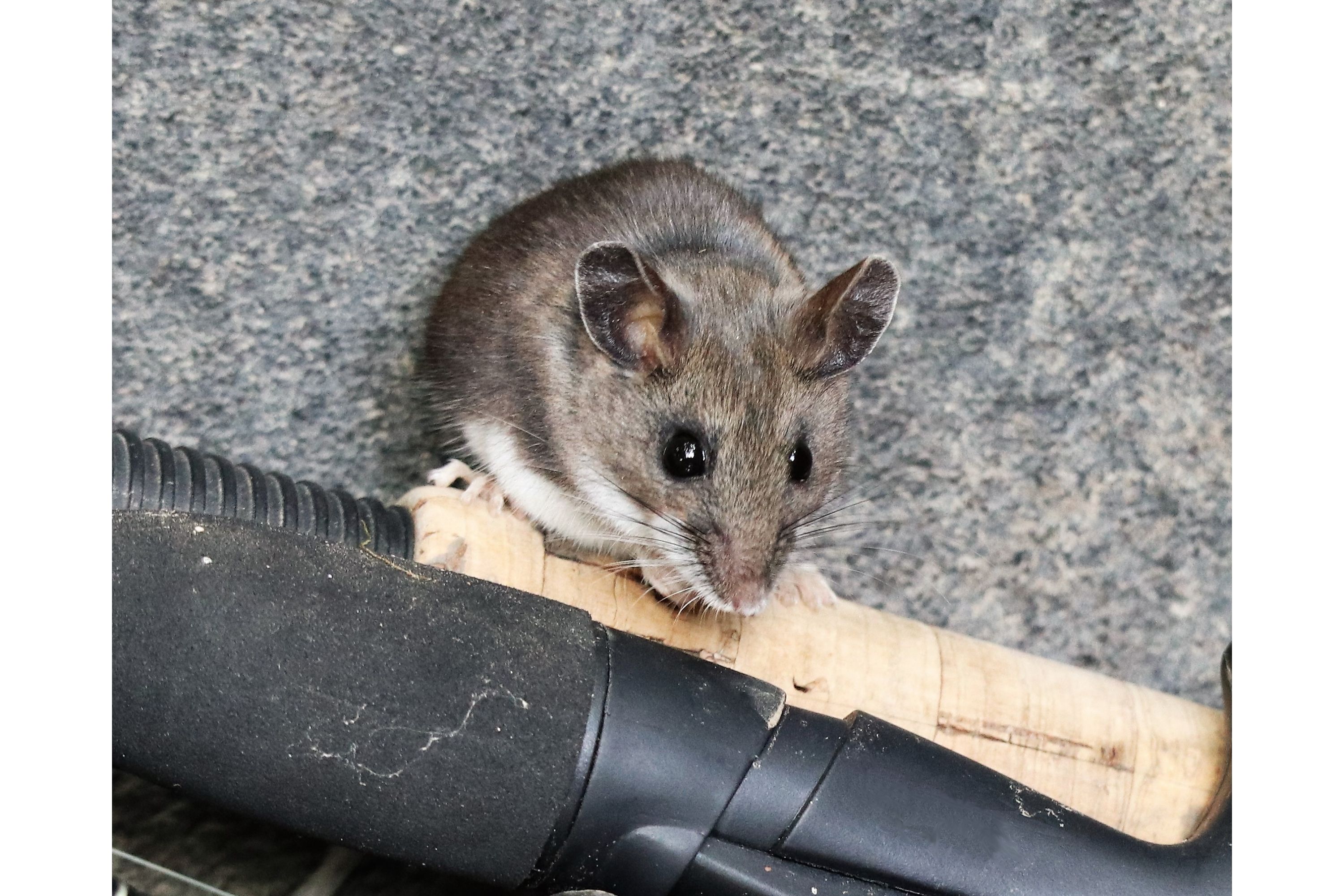Eastern Deer Mouse
(Peromyscus maniculatus)

Description
Peromyscus maniculatus is a rodent native to eastern North America. It is most commonly called the eastern deer mouse; when formerly grouped with the western deer mouse (P. sonoriensis), it was referred to as the North American deermouse and is fairly widespread across most of North America east of the Mississippi River, with the major exception being the lowland southeastern United States. Like other Peromyscus species, it can be a vector and carrier of emerging infectious diseases such as hantaviruses and Lyme disease. It is closely related to Peromyscus leucopus, the white-footed mouse. The eastern deer mouse is small in size, only 3 to 4 inches (8 to 10 cm) long, not including the tail. They have large beady eyes and large ears giving them good sight and hearing. Peromyscus maniculatus has soft fur which varies in color, from gray to brown, but all deer mice have a distinguishable white underside and white feet. Deer mice tails are covered with fine hairs, with the same dark/light split as the fur on the rest of its body. P. maniculatus has distinct subspecies. Of those most common in North America, the woodland form has longer hind legs, a longer tail, and larger ears than the prairie form. Eastern deer mice are nocturnal creatures who spend the day time in areas such as trees or burrows where they have nests made of plant material. The pups within litters of deer mice are kept by the mother within an individual home range. Deer Mice typically live in a home range of 242 to 3000 square meters. Although deer mice live in individual home ranges, these ranges do tend to overlap. When overlapping occurs, it is more likely to be with opposite sexes rather than with the same sex, as male deer mice have a much greater home range than the much more territorial females. Deer mice that live within overlapping home ranges tend to recognize one another and interact a lot. The woodland variety of P. maniculatus is an adept climber, and prefers tree cover meters above the ground, while the prairie form prefers to move from burrow to burrow in open areas, avoiding floral cover.
Taxonomic tree:







